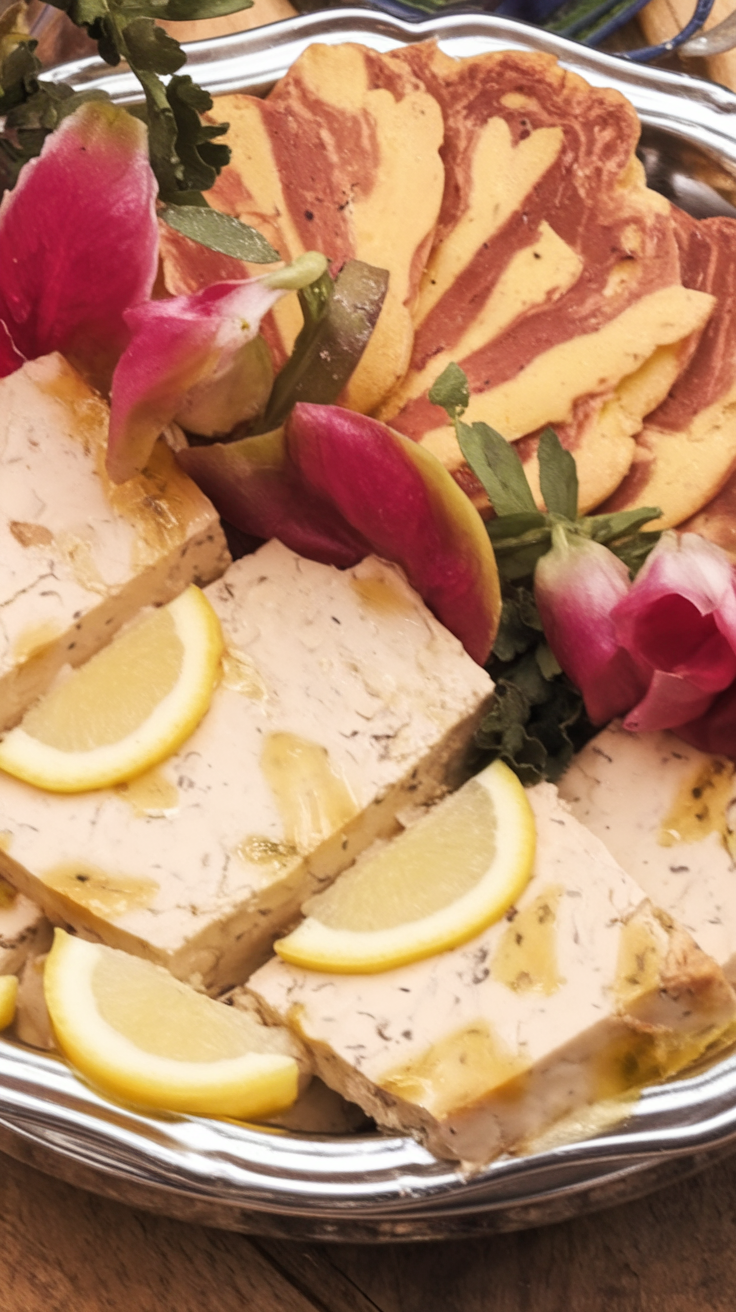Ah, French pâté—an indulgence that somehow manages to exude both rustic charm and refined sophistication all at once! Picture this:
a lazy Sunday afternoon, a gentle breeze wafting through your kitchen window, while you spread a generous slice of pâté onto a crusty baguette. In that moment, you’re not just tasting a dish; you’re savoring history, rich with the echoes of French countryside traditions.
It’s a culinary experience that feels like a warm embrace, yet somehow, it also leaves you pondering life’s bigger questions.
Steps
- Start by selecting your choice of meat, such as pork, poultry, fish, or beef, and prepare it by mincing or blending it for a smooth texture.
- Combine the minced meat with fat, vegetables, herbs, and spices. You can also add wine or brandy for additional flavor.
- If making a chicken liver parfait, puree raw chicken livers and pass them through a sieve or blender before mixing with eggs, fortified wine, shallots, thyme, garlic, and cognac.
- For a smoother texture, cook the parfait mixture in a bain-marie until it sets properly.
- Alternatively, if making a traditional pâté, first cook the liver by boiling or frying, then mix it with butter, fat, and seasonings like onions and carrots.
- Once mixed, the pâté can be served directly or further cooked, such as by baking, depending on the recipe and desired texture.
- Present the pâté by molding it into a decorative shape or simply serving it on a plate or in a bowl, accompanied by bread or crackers.

Ingredients
- Pork, poultry, fish, or beef meat
- Liver (such as chicken or pork liver)
- Fat or butter
- Eggs
- Shallots
- Thyme
- Garlic
- Wine
- Brandy or cognac
- Fresh or fried onions
- Carrots
- Spices and herbs
FAQ
- What is pâté?
- Pâté is a type of forcemeat that was originally cooked in a pastry shell but is now more commonly prepared without pastry in a terrine. It can be made with various ingredients, including meats like pork, poultry, fish, or beef, as well as vegetables, herbs, spices, wine, and brandy.
- What is the difference between pâté en croute and pâté en terrine?
- Pâté en croute refers to a pâté that is baked in a pastry crust, while pâté en terrine is made without pastry and is cooked in a dish known as a terrine. The terms terrine and pâté are often used interchangeably.
- What are some popular variations of pâté?
- Some popular variations include chicken liver parfait, which is made for a smoother texture by blending raw livers with ingredients like eggs and cognac before cooking. In Central and Eastern Europe, liver pâté is known as pashtet or pasztet, and in Jewish cuisine, similar dishes include chopped liver and vorschmack.
- How is pâté used in different cuisines?
- In Ashkenazi Jewish cuisine, pâté is known as chopped liver and often includes schmaltz and hard-boiled eggs. In Vietnamese cuisine, pâté is a common ingredient in bánh mì sandwiches. In Russian cuisine, pâté is sometimes shaped into forms like animals for presentation.
- Has pâté been used in military contexts?
- Yes, tinned pâté has been included in military rations for its shelf stability, and it has been part of the French Armed Forces’ rations for over a century.
Tips
- For a smoother texture in chicken liver parfait, blend the raw livers and pass them through a sieve before mixing with other ingredients like eggs, wine, and herbs.
- When making pâté, consider using a variety of meats such as pork, poultry, fish, or beef combined with fat, vegetables, and spices for a rich flavor profile.
- In Central and Eastern European styles of pâté, you can incorporate liver from different animals and enhance the flavor with onions, carrots, and various seasonings.
- To achieve a more traditional pâté en croute, encase the mixture in pastry before baking, which was a common method in the dish’s earlier history.
Equipment
- Terrine Mold: A specific dish used to cook and shape the pâté.
- Blender or Food Processor: Essential for pureeing the liver and other ingredients to achieve a smooth texture.
- Sieve: Used to pass the pureed mixture through to ensure smoothness.
- Bain-Marie: While you can improvise with existing kitchen items, a dedicated bain-marie setup can be helpful for gently cooking the pâté in a water bath.
- Meat Thermometer: To ensure that the pâté reaches the proper internal temperature for safety and texture.

